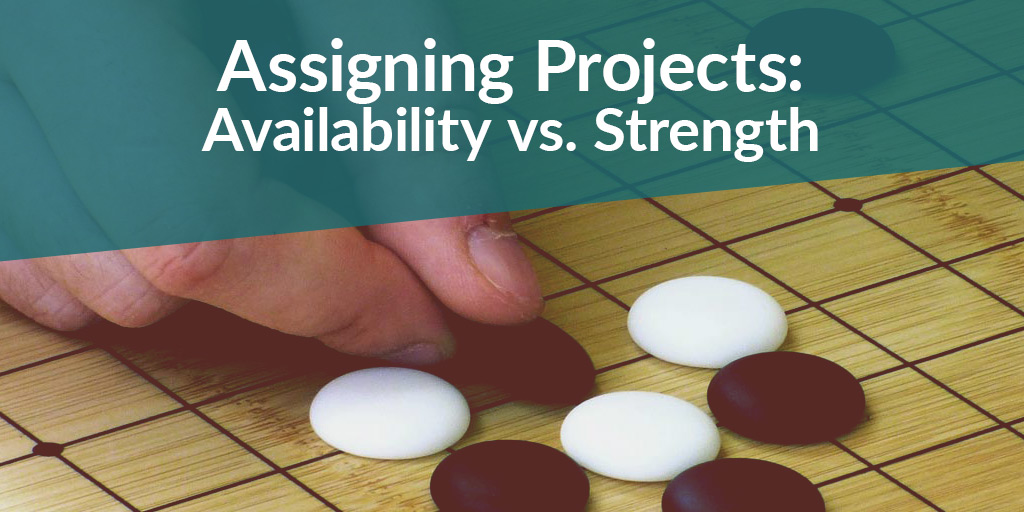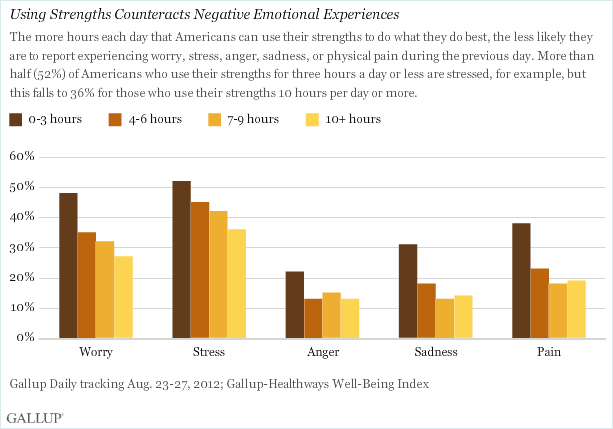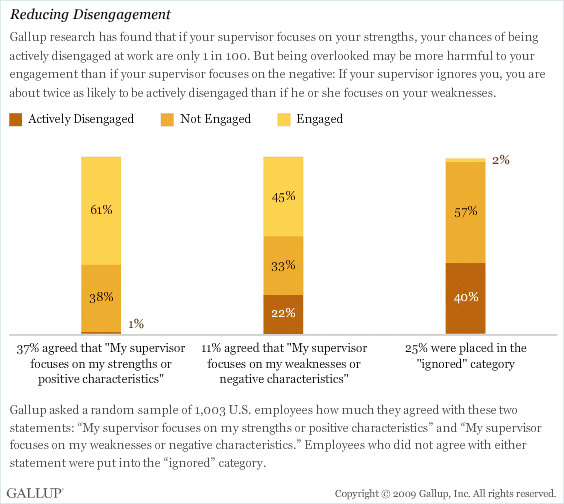Assigning Projects: Availability vs. Strength

When I meet a new company, I like to look at how they delegate tasks and projects. Who is responsible for the weekly reporting? Whose job is it to make customer check-in phone calls? What parameters do they use to pair work and people.
Too often I see companies (even with Customer Success teams in place already) making the same mistake: they assign work based on availability, not strength.
Assigning projects based on availability seems like the efficient approach. You think, “Darcy doesn’t have much on her plate right now. It makes sense to give her this new project.” But if you ask Darcy to take on a Customer Success task that isn’t aligned to her strengths, you’ll just waste everyone’s time.
Everyone has their own strengths. Some are broad and easy to notice. Others are niche and hidden. Some people have related skills; others are eclectic.
Before you can assign tasks based on the strengths of your team, you have to know those strengths. I recommend having each person take this StrengthsFinder assessment. More than nine million people have used it to discover their talents. It’s not perfect, but it’s a great place to begin.
So why should we assign work based on strengths?
Using employees based on their strengths spurs efficiency and productivity
In baseball, the fastest runners play the outfield. In football, the heavy hitters defend the quarterback. When you need to haul a load of mulch, you take a pickup truck, not a motorcycle.
Using the strengths of your team boosts their overall efficiency. They will produce quality work at a faster rate than if you simply assigned projects based on whoever was near you at the time.
Gallup uncovered data shows that when leaders learn their team members’ strengths (before applying a dedicated strength-based task assignment system), employees become 7.8% more productive. When a strength-based assignment policy is established, that increase rises to 12.5%. That’s a big increase for a simple change in management style where no resources are invested.
As the team leader, you need to have a keen understanding of each project. Before your team gets to work, you must have a high-level understanding of the project’s components and the types of skills necessary to complete each piece.
At first glance, a project may seem easy to divide. It has three steps, so you dole each step to a person on your team. But if the strengths of each person don’t correspond with the step they were assigned, they’ll struggle, become frustrated, and produce poor work.
Instead of handing tasks to whomever is available, you’ll have to pair them to the person who can complete them best. Sometimes, this means taking an unconventional approach to task management.
Perhaps that project that seemed easy to divide needs to be split in a nontraditional way. For instance, perhaps Step 1 is actually two smaller steps. Perhaps the person assigned to Step 2 will also contribute to a portion of Step 3.
It helps to be open with your team about their strengths. Everyone should understand their own strengths and the skills of everyone else. This helps you create roles that play to those abilities.
For example, Tony (a member of your Customer Success team) has excellent communication and investigation skills. Give Tony the responsibility of speaking with customers whenever the team needs feedback. If a project calls for an information-gathering interaction with a customer, it is Tony’s job to make the connection, even if Tony wasn’t otherwise involved in the project.
These assigned responsibilities help alleviate micro-managing, as well. You won’t have to assign every little step of a project to each person. When team members need a task completed, they can go straight to the person with the complementary strength.
Often, a project isn’t going to fit nicely within the strength boundaries of your team. Sometimes there’s going to be a task where no one excels, but it has to be done. Sometimes a task can’t be assigned to the strongest person because that person is otherwise occupied. These are the realities of management.
Penn State University found that in these cases, it’s best to assign tasks collaboratively. Hold a short meeting where you break the project down as best as possible. Have the group brainstorm the best ways to tackle the components. This gives your team an opportunity to make arguments for or against your distribution of tasks.
Strength-based working improves health and wellness

When we focus on the strengths of our staff, we can actually improve their health. According to Gallup, employees are less likely to experience stress, anger, worry, sadness or physical pain when their work correlates with their abilities. 52% of the employees studied who only use their strengths for three hours a day are stressed, but only 36% are stressed when they can use their strengths all day.
The study also found that the effects compound over time. As employees are given opportunities to use their strengths at work, they become less likely to report stress, sadness, or low-energy even during the moments when they can’t use their strengths.
Furthermore, workplace wellness creates a feedback loop. Happy and satisfied employees smile, laugh, treat others with respect, feel respected, and are more productive. The pleasant moments make the inevitable tough problems and boring hours (let’s face it – any job has some of these) easier to bear.
This type of culture is critical in a Customer Success environment where customer interaction is so common. It’s easy for an employee’s foul mood (even if they work to hide it) to infect the relationship with the customer.
When managers focus on strengths, engagement increases
People are six times more likely to be engaged with their job if they use their strengths every day. Using their strengths gives them purpose and reason to show up for work. They feel like they have value and contribute value to something each day.
On the other side, workers whose leaders focus on weaknesses are more likely to be disengaged from their work. (Interestingly, if a leader doesn’t focus on strengths or weaknesses, disengagement is greatest.)

Why do we want our employees and colleagues engaged with their work? For one, people who are engaged find meaning in their work. They are emotionally invested. They’re troubled by their work failures and excited by their successes. They feel a sense of ownership over their projects.
When a person’s performance at work becomes tied to their feelings about themselves, they strive to succeed. Disinterested employees don’t care about the performance of their work or the company in general, which is a toxic mindset in Customer Success. CS managers and leaders absolutely must care about their work.
Taking it one step further
Playing to your team’s strengths isn’t enough. You need to actively improve those muscles. This can be achieved partly by giving them tasks that require those skills. You should also help them actively develop their abilities through formal training and student-driven learning.
Improving strengths is a more effective strategy than improving weaknesses. People are always going to lean on their strengths. If you develop a person’s strengths, they’ll think “My company is trying to improve me.” But if you try to develop their weaknesses, they’ll think “My company is trying to improve my company.”
We typically like what we’re good at and we’re good at what we like. If you force a person to exercise their weaknesses, they’ll eventually leave your company. If you can find ways to make your employees use their strengths, you’ll improve their performance, their career, and even their life.
How are you using your team’s strengths? Let me know on Twitter.
